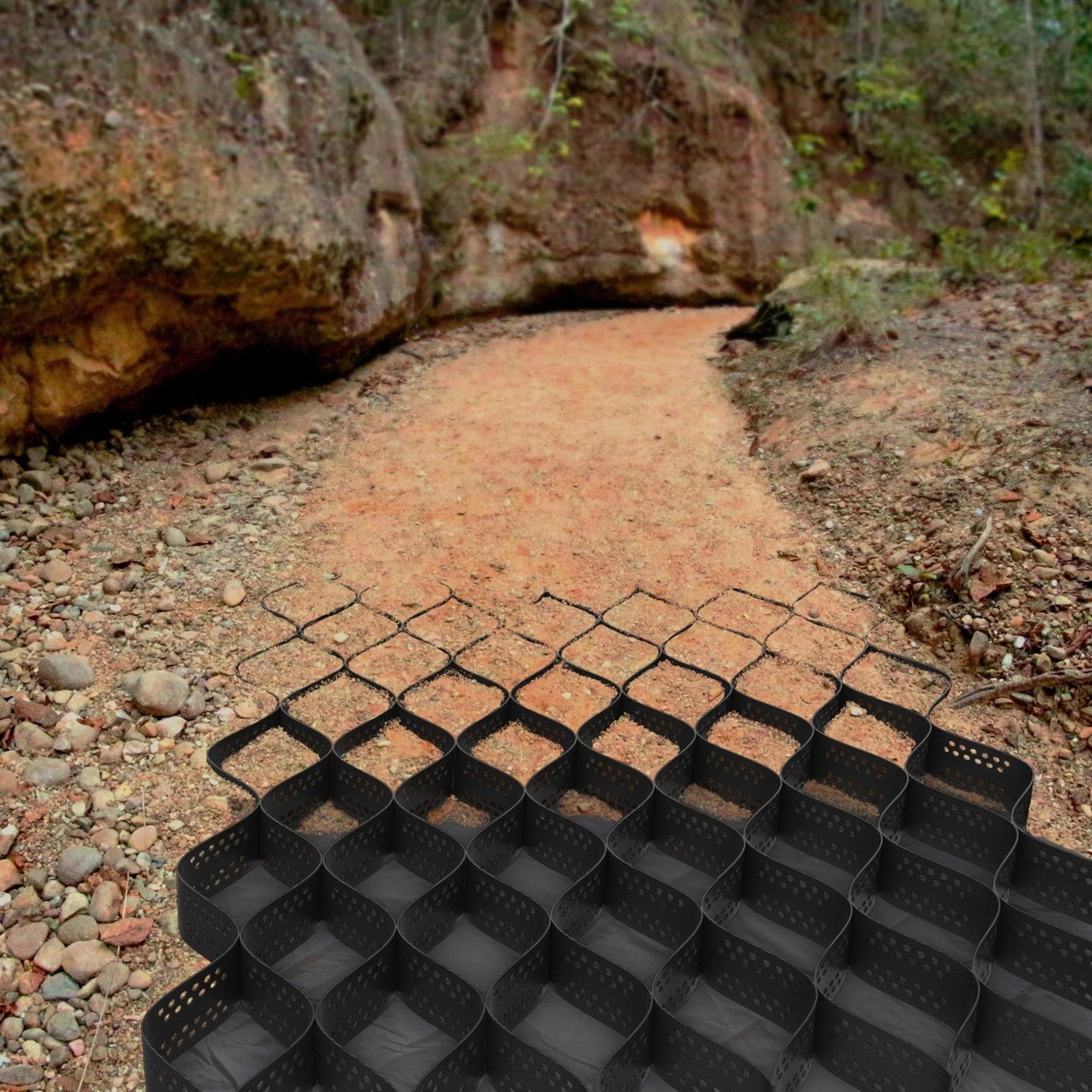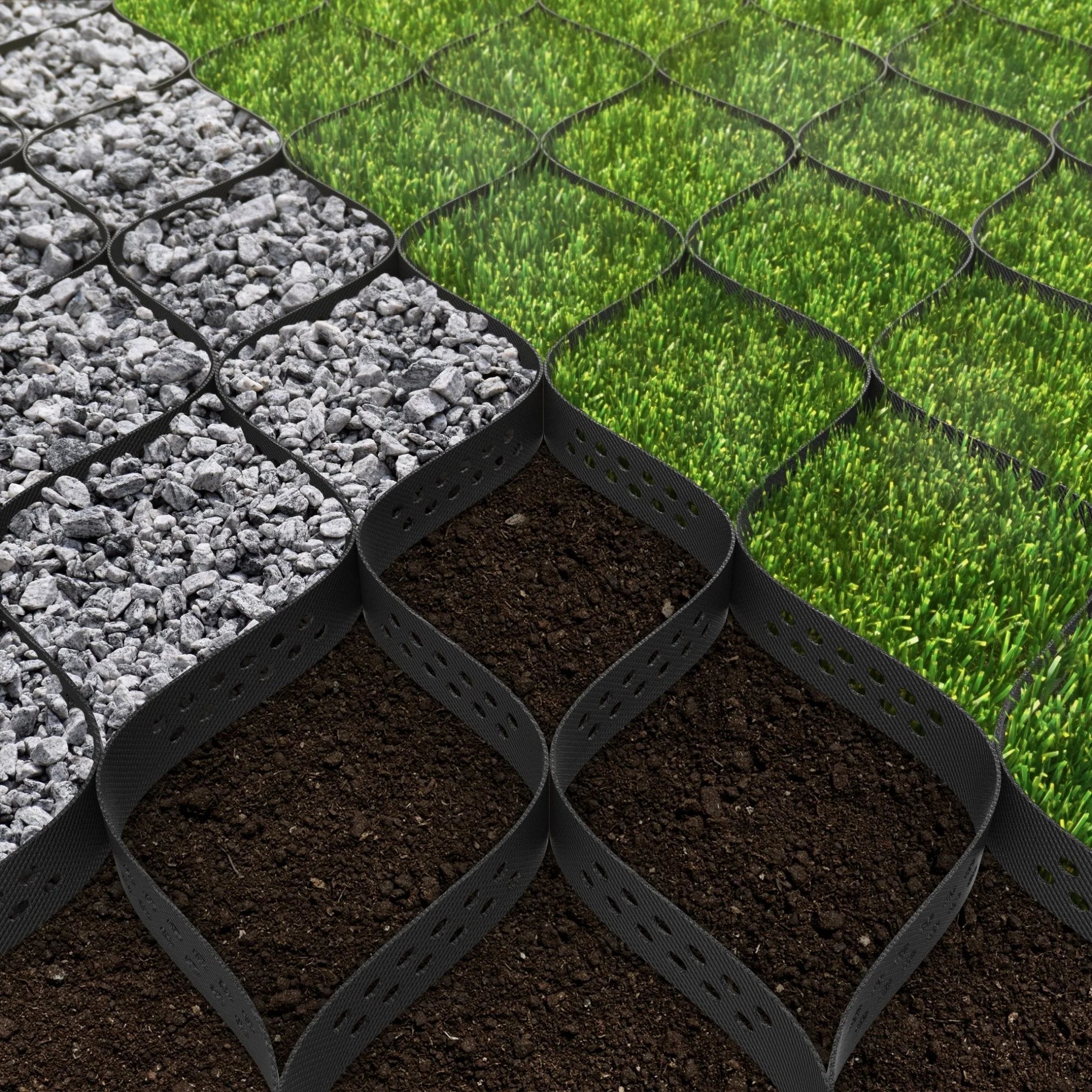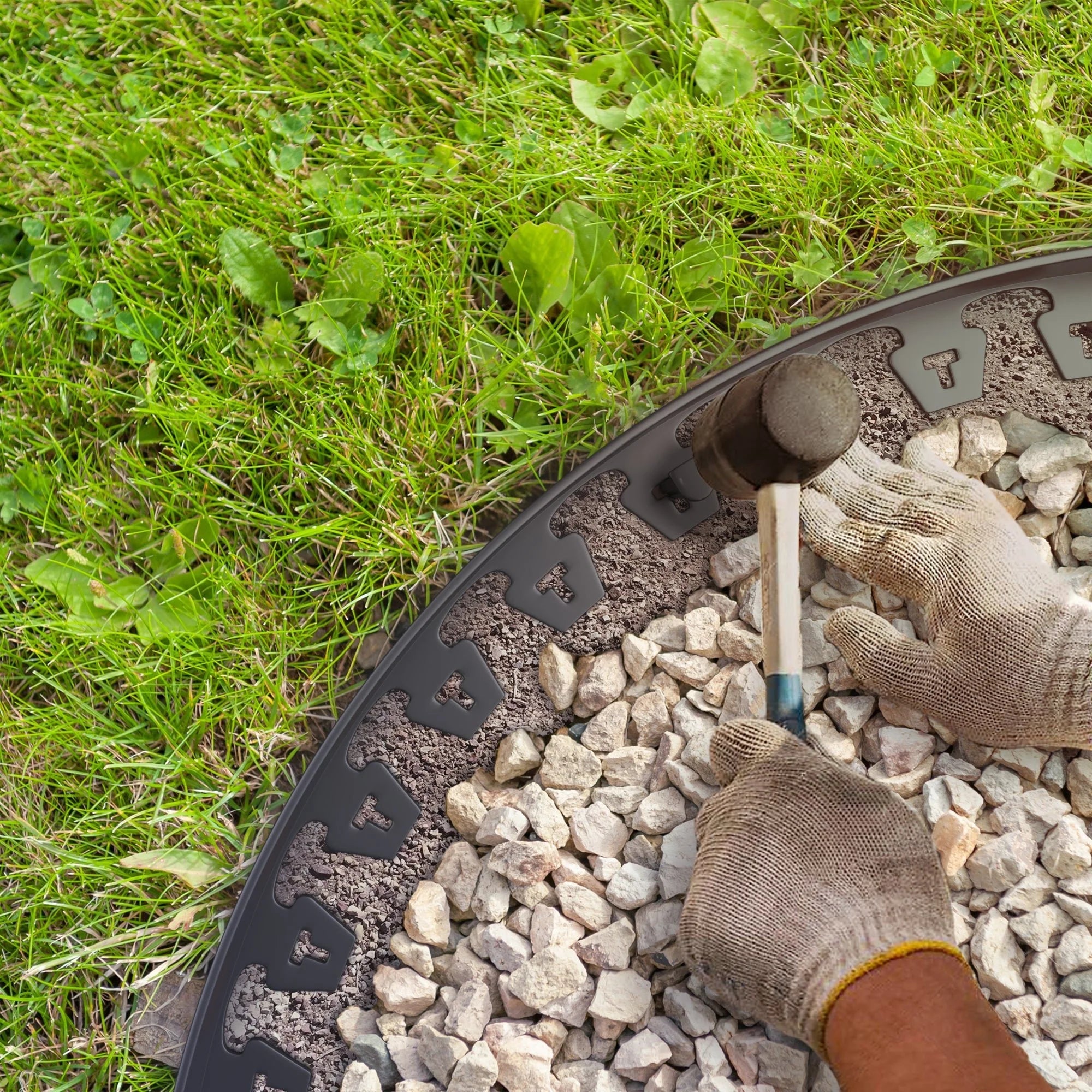Within the category of geosynthetics–products used to stabilize terrain and prevent erosion–there are two terms that are often the source of confusion: geocells and geogrids. These terms are often used to refer to the same thing, and while that is correct in one sense, it’s inaccurate in another.
But don’t worry, in this blog we’re going to clear everything up. Here, we clarify the difference between geo ground grids and geocells, and offer insight into how geosynthetics can revolutionize your space.
Geocells vs Geogrids
To set the record straight, geocells are the individual components that make up geogrids. Geogrids are lattice-shaped (or mesh-like) plastic systems that stabilize terrain, and each opening within the grid system is considered a geocell.
This grid of consecutive cells, while it is the source of some naming confusion, is however the reason geogrids are such effective solutions. Here are some of the characteristics geogrids have due to their shape:
Load-Bearing Capacity
The inherent structure of geogrids allows for a strong bearing capacity by evenly distributing loads over a broad area, making them ideal for heavy-duty applications like retaining walls and soft soil foundation reinforcement. It also allows for good load-bearing capacity in applications requiring strength to stabilize soil, such as in road construction.
Flexibility and Confinement
The individual cells of the geogrid offer significant flexibility, easily adapting to varied landscape contours and effectively confining soil to provide superior load-bearing capacity.
Erosion Control
Geogrids are great in erosion control applications because their cellular structure prevents water and wind from displacing the soil they hold. High-quality versions also have small holes along the sides of each cell that allow surface water to easily permeate the system, which further prevents pooling.
Durability
Both geogrids are primarily manufactured from high-density polyethylene (HDPE), which is known for its corrosion resistance, large friction coefficient, and long-term durability. This material base provides the geogrids with longevity even when they are exposed to environmental stressors.
Soil Stabilization
In terms of soil stabilization, grids are particularly effective in stabilizing soft, unstable soils by confining the soil particles within their cells. This provides a solid foundation for various construction projects.
Installation Techniques
Installing a geocell system generally involves expanding the cell structure across your space, anchoring it in place, and filling with your desired infill material. Here, the mesh-like cell structure gives the geogrid the versatility it needs to be used in various applications: they can be filled with anything from grass, gravel and soil to sand and concrete.
Most Common Geogrid Applications
Geocells provide geogrids with a number of important characteristics. These characteristics by extension lend themselves to various applications. Some of the most common geogrid uses include:
- Roadbed Reinforcement: To distribute loads more evenly and increase the stability and lifespan of roads.
- Driveway and Parking Lot Stabilization: Enhancing load-bearing capacity to prevent rutting and deformation.
- Retaining Wall Construction: Providing tensile strength to soil, reducing pressure on the wall and improving stability.
- Slope Protection: Preventing soil erosion and promoting vegetation growth by stabilizing the soil on slopes.
- Erosion Control Measures: Used alongside other solutions to reinforce soil and prevent erosion in vulnerable areas.
- Foundation Support: Increasing the load-bearing capacity of soil beneath foundations, especially in areas with soft ground.
- Landscaping Projects: Stabilizing the ground for paths, walkways, and decorative garden features, ensuring their longevity and reducing maintenance.
Vodaland USA - Reinforce Your Terrain

As you can see, geogrids, because of their geocells, are useful terrain stabilization solutions. With their three-dimensional mesh structure, they provide the load-bearing capacity, erosion control, stabilization, flexibility, and versatility for various applications,
So with this information in mind, you're ready to decide which of our Vodaland landscaping solutions is right for your project. We pride ourselves on designing and manufacturing systems that are both functional and aesthetically appealing – and our geosynthetics are no exception. Check out our geo ground grid selection today, and find what you need to get the job done right!



Leave a comment
This site is protected by hCaptcha and the hCaptcha Privacy Policy and Terms of Service apply.